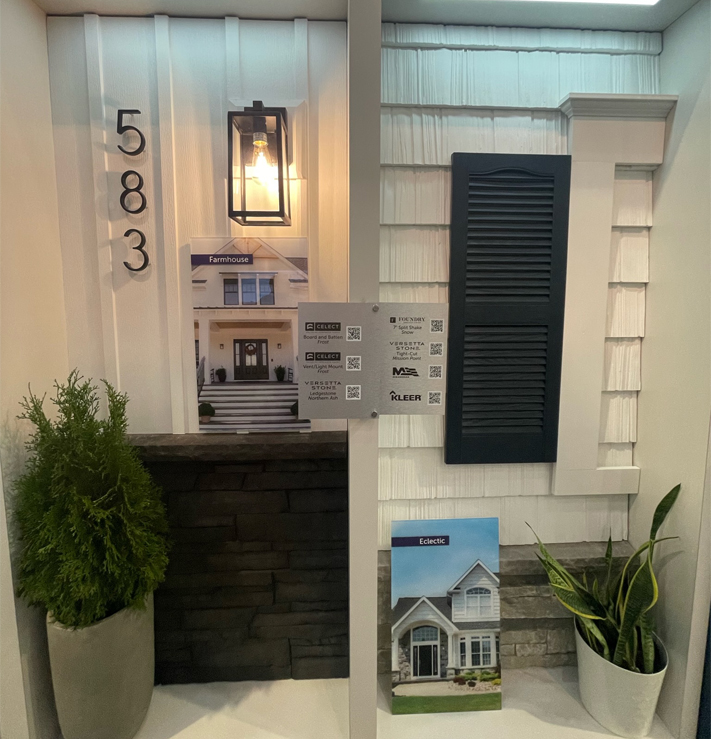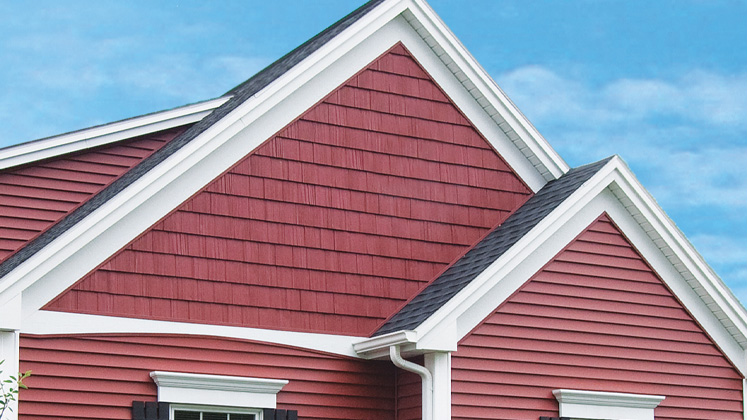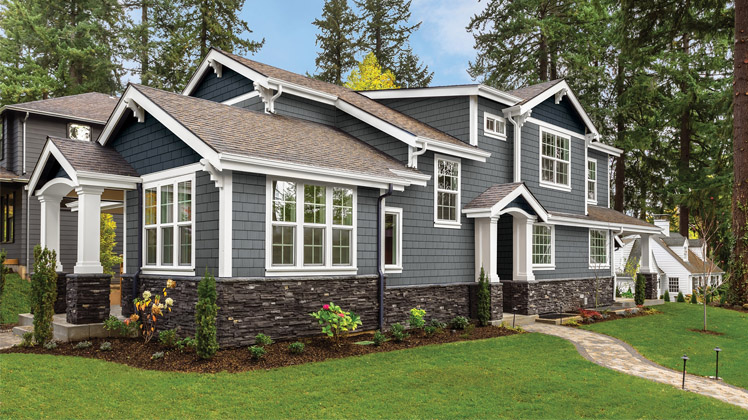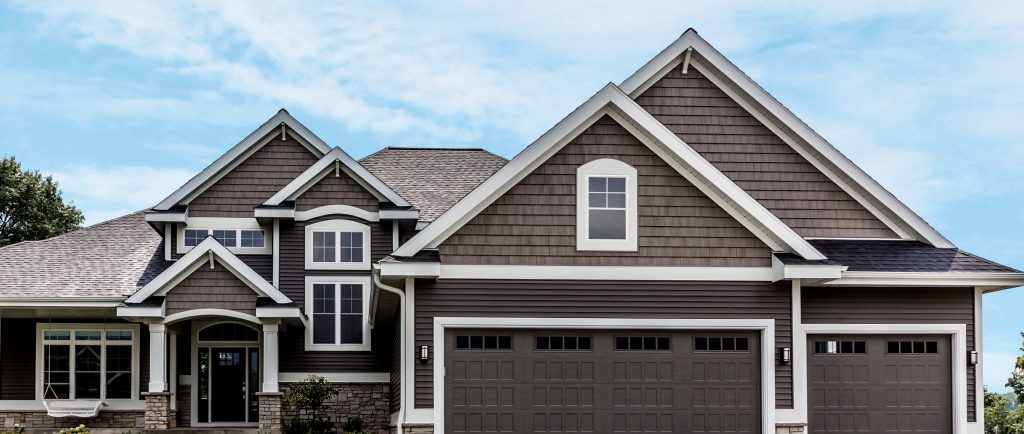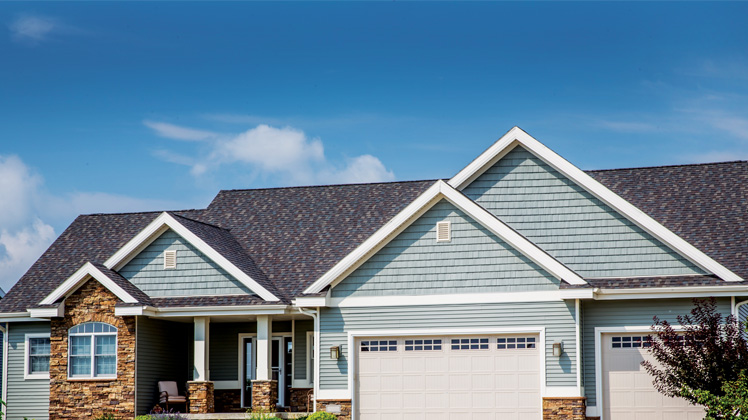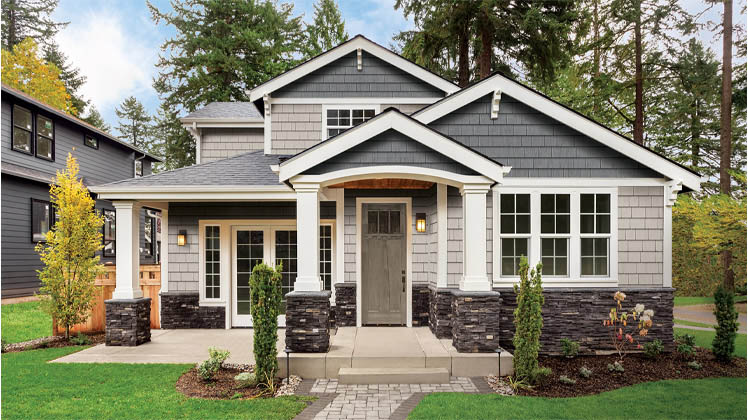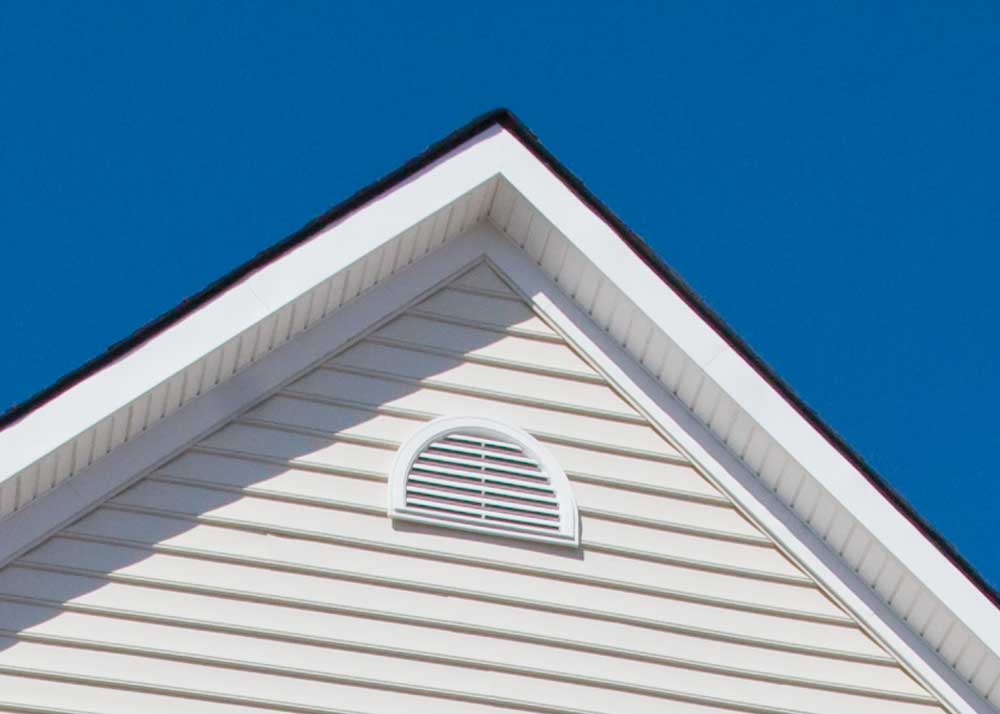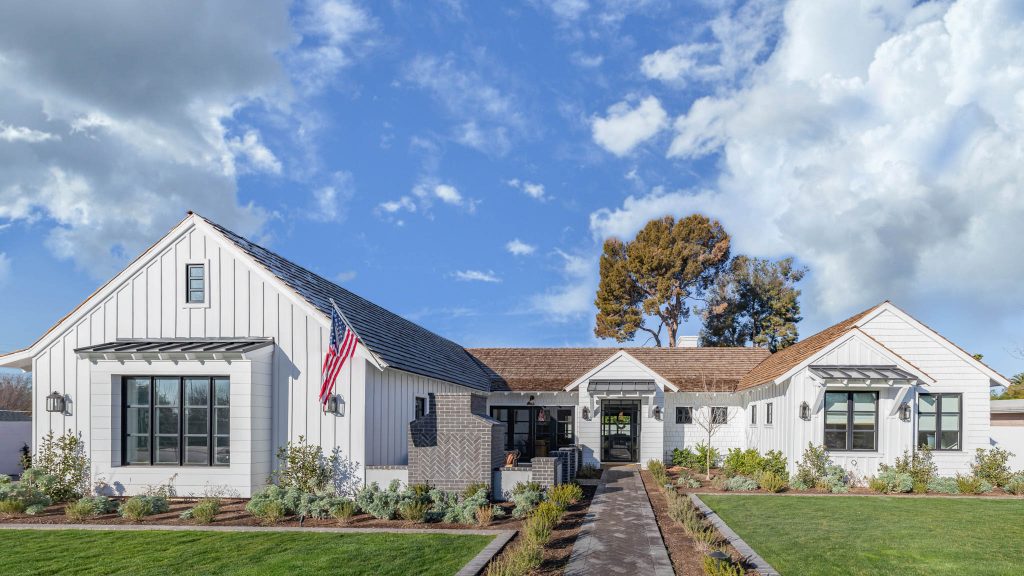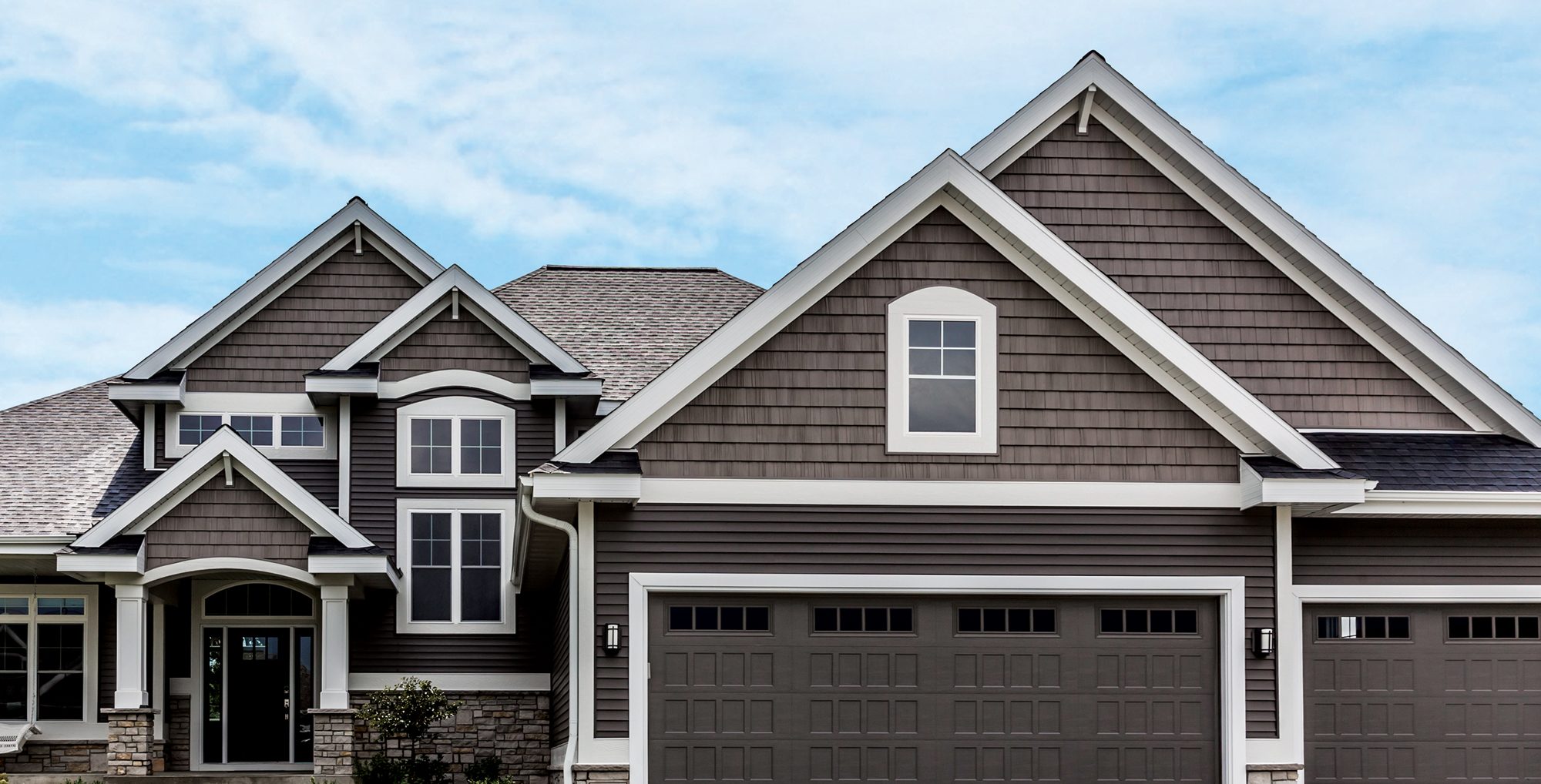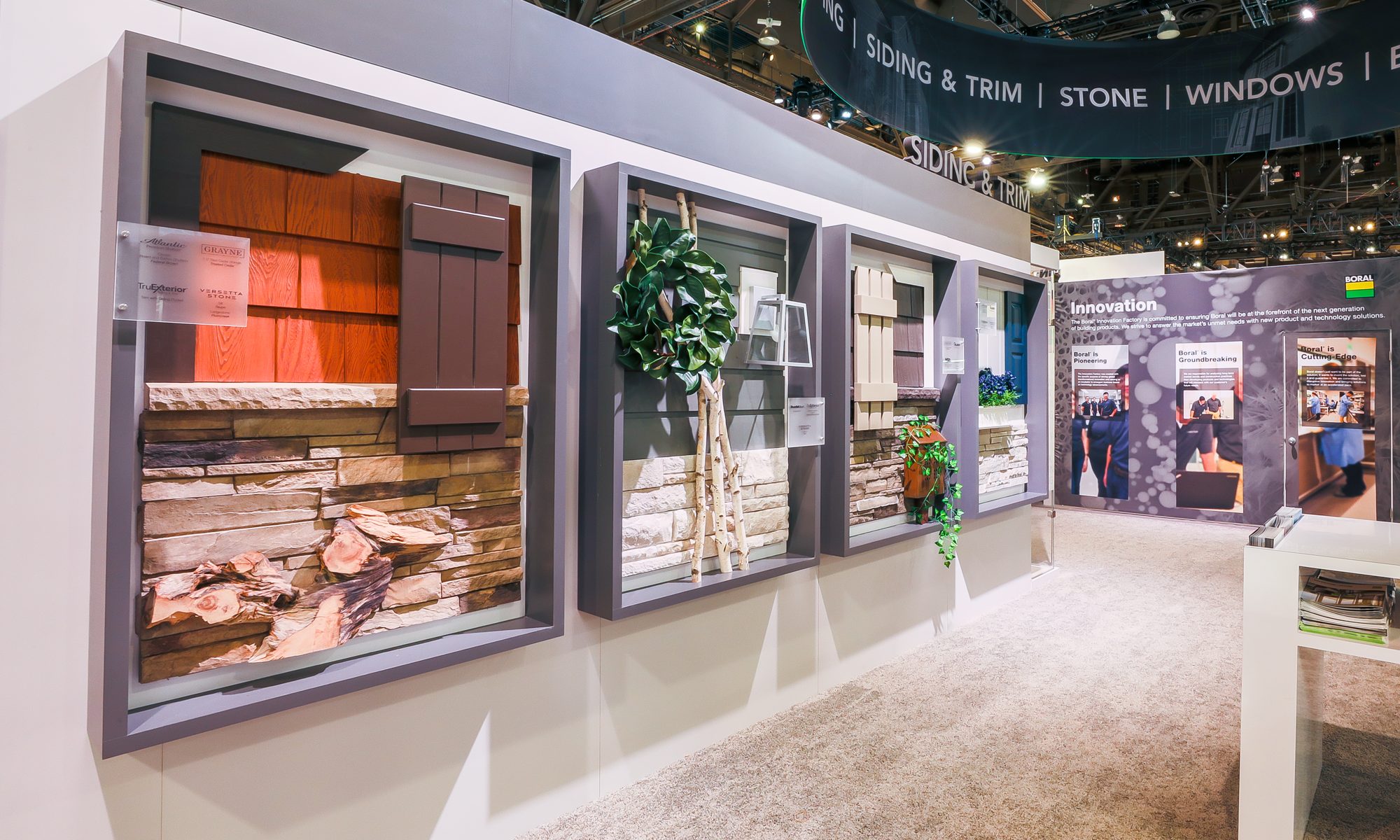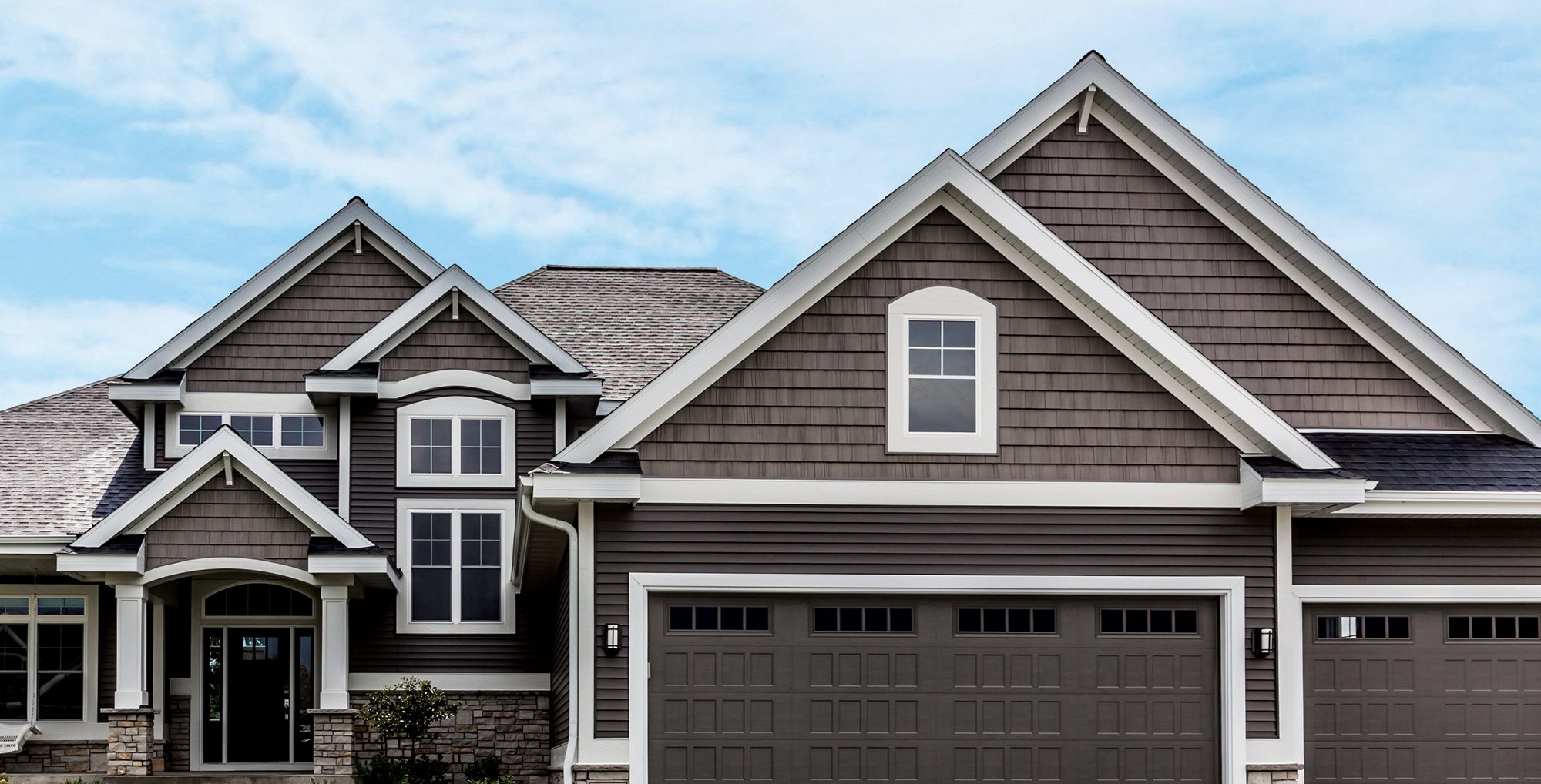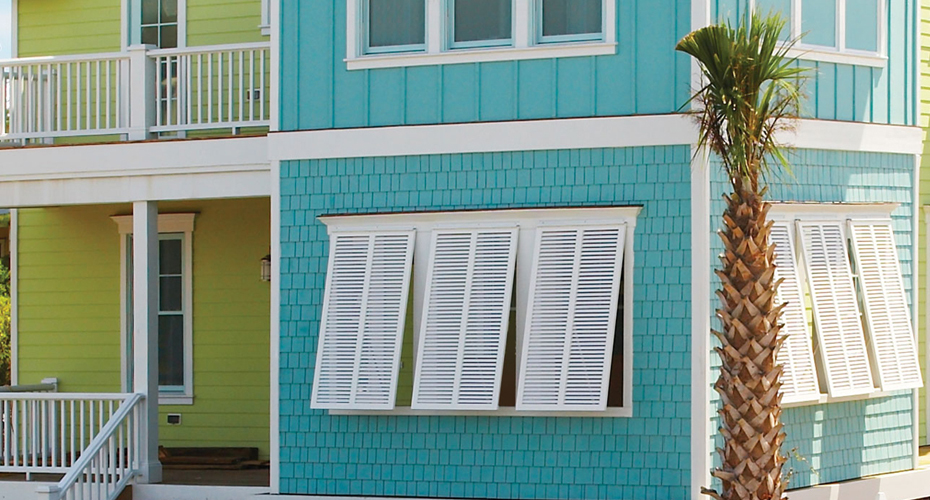With the sheer number of siding options on the market, siding selection can sometimes be difficult for homebuyers as they navigate which materials, styles, profiles, and colors are right for them. Being able to see—and feel—the choices and understand how they work together can be powerful. Physical inspiration boards at the dealer or in a builder’s showroom or model home can help customers begin to envision how products look in real-world applications, visualize how they come together in popular multi-textured facades, and determine what they like and don’t like.
An inspiration board is a three-dimensional element that serves as a miniature wall section, combining several types of cladding, trim, and accessories into a diorama of sorts. Unlike a display board showing a small sample or even a larger product section, an inspiration board gives buyers an idea of how the finished exterior will look when fully outfitted with other claddings and accessories.
Here’s are examples of some of the inspiration boards Westlake Royal Building Products™ curated for this year’s International Builders’ Show:
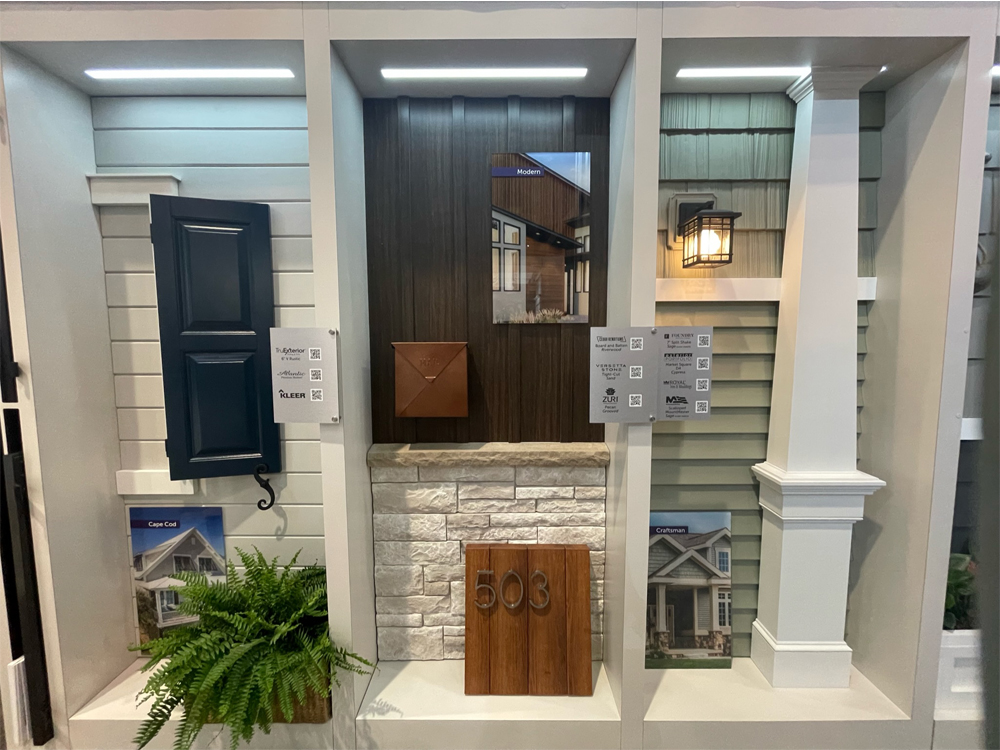
Vignettes can combine several types of cladding to show common ways of achieving the multi-textured look, such as Versetta Stone with Cedar Renditions in the center vignette above or Exterior Portfolio Market Square siding with Foundry 7” Split Shake in the right-hand vignette. Each includes coordinating accessories to complete the look, including Atlantic Premium Shutters, Royal Trim & Mouldings column wraps, and a color-matched Mid-America mounting block.
“It brings it all together, catches people’s eye, and helps them visualize how they can outfit their exterior with Westlake Royal Building Products,” said Kriss Swint, Director of Marketing Communications. “Those applications help create more of a feeling and a mood. It helps us tell our story.”
If space is a concern, inspiration boards can take the form of smaller shadow boxes, such as these boards displayed at the 2020 Builders’ Show:

Though slightly smaller, these displays still make it easy for customers to see how various products come together to make a cohesive, eye-catching look.
Here are some tips for creating inspiration boards to ease siding selection:
• Seek out ideas: To put together Westlake’s inspiration boards, the team consults with product managers about the latest trends and draws on what customers are doing with the products. They also study magazines and Pinterest to keep up on new combinations and find fresh ideas.
• Include signage: Be sure to identify the products in the display so that buyers know what they are looking at, that everything is available from you, and how they can replicate the exact look if they so choose.
• Include images: Accompanying images showing a rendering of the look on a full home or of the home that inspired the vignette can help further increase and ease visualization.
• Add decorative touches: Don’t forget the other elements one would find on the exterior, such as plants, a light fixture (with mounting block), window box, or address block.
• Add QR codes: Including a QR code with a link to the products’ web pages or online brochures can make it easy for visitors to get more information on the products they’re seeing as they make their decisions, freeing up your staff in the process.
• Leverage your manufacturer: Don’t be afraid to reach out to your manufacturer rep for help curating your inspirational displays. They can offer advice on what products work best together and assist with finding the right information to link to, along with providing take-home samples, fan decks, and literature.
To make inspiration boards more powerful, you can pair them with Westlake’s online design tools, including the Virtual Remodeler, the Dream Designer, and HomePlay Prime, which allow buyers to mix and match products on an image of their own home or a similar home.
Related articles:
• Resources for Selling and Installing Siding & Trim
• Best Practices for Multi-Textured Facades
• Why and How LBM Dealers Should Sell Exterior Packages

